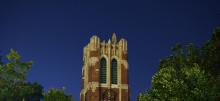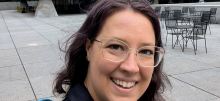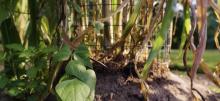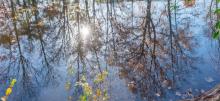
NIH Awards $3.1M to MSU To Study the Impact of Stuttering on Children
Researchers in MSU’s Developmental Speech Laboratory received $3.1 million from the National Institutes of Health for a five-year study examining why stuttering affects some children more negatively than others. The project is the first large-scale longitudinal study to focus on how the adverse impacts of stuttering develop in children.

Astronomers Capture New Images of Star Explosions in Real Time
Astronomers have captured unprecedented, detailed images of two stellar explosions — known as novae — within days of their eruption. The breakthrough provides direct evidence that these explosions are more complex than previously thought, with multiple outflows of material and, in some cases, dramatic delays in the ejection process.

Scientists Create First Human Heart Organoid To Replicate A-Fib
Though an estimated 60 million people around the world have atrial fibrillation. It’s been at least 30 years since any new treatments have been developed. This is because researchers haven’t had accurate models of the human heart to study. Thanks to new developments from Michigan State University scientists, that is no longer the case.

How Social Media Shapes Tolerance and Echo Chambers
A Michigan State University–led study explores how social media might strengthen or weaken echo chambers. The study focused on social media use and the attitudes of young people who leave rural areas to attend university and the attitudes of their parents who stay behind.

Is Narcissism a Uniquely American Trait? A New Study Suggests Not
But a recent study from researchers at Michigan State University’s Department of Psychology found that narcissism is a universal trait with consistent patterns across cultures. Interestingly, their findings indicate the U.S. is not even in the top five countries with the highest levels of narcissism — and that rates are higher among young adults and men.

Experience Architecture Professor’s Research Supported by Yale University Fellowship
As a Beinecke Library Fellow, Sara Doan, spent two weeks immersed in the archives of Yale University’s Beinecke Rare Book and Manuscript Library, uncovering materials to inform her forthcoming book, Visualizing Pandemics: A History of Data in Action, that focuses on public health communication and the history of persuasion during disease outbreaks

Research Helping Drive Michigan’s Dry Bean Industry
Michigan State University researchers are helping power Michigan’s dry bean industry from seed to shelf through more than a century of innovation and partnership. From elite bean breeding programs to on-farm trials and sustainability research, MSU’s work boosts yields, quality and global competitiveness. Growers and food companies alike say this research is essential to keeping the industry strong, resilient and profitable.

Michigan Cherry Farmers Find a Surprising Food Safety Ally: Falcons
The cherry harvest wrapped up months ago. But in northern Michigan, some growers are already anticipating the spring resurgence of a tiny raptor that could benefit next season’s crop. The American kestrel is the smallest falcon in the U.S. As birds of prey, kestrels deter smaller birds that like to snack on farmers’ fruit. But new research suggests that these winged security guards may have an additional benefit: food safety.

Groundbreaking Technique Unlocks Secrets of Bacterial Shape-Shifting
Scientists have long known that bacteria come in many shapes and sizes, but understanding what those differences mean has remained a major challenge, especially for species that can’t be grown in the lab. Now, a new study led by Nina Wale introduces a groundbreaking method that could change how researchers study bacterial diversity.
